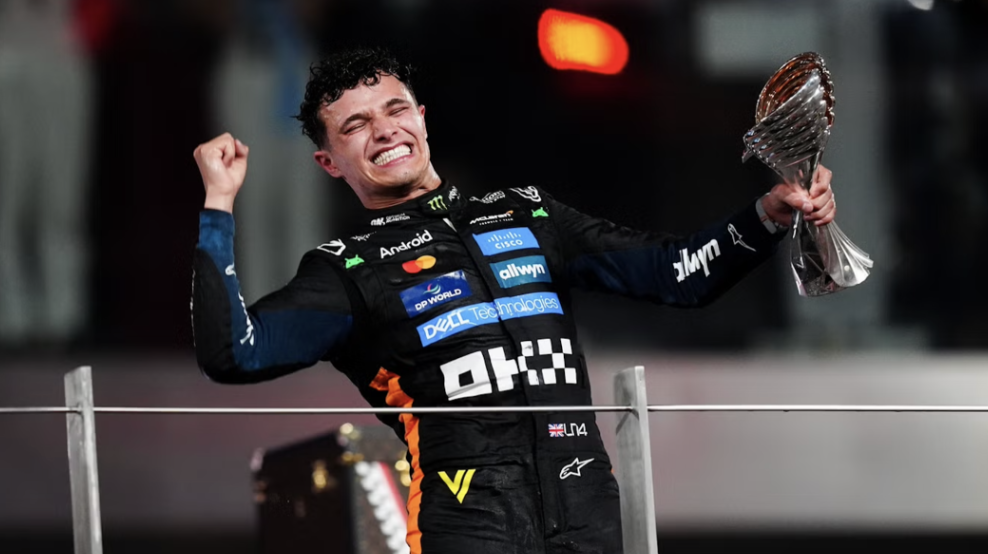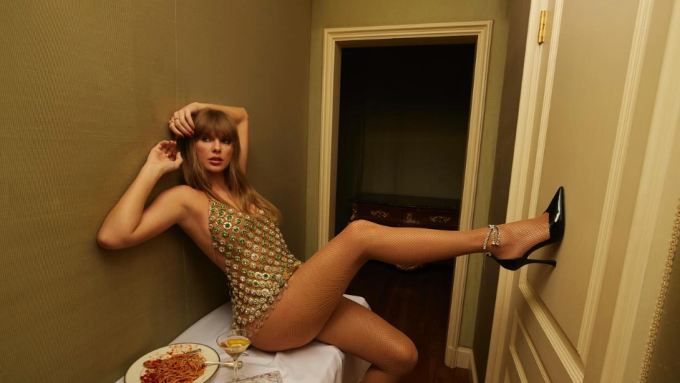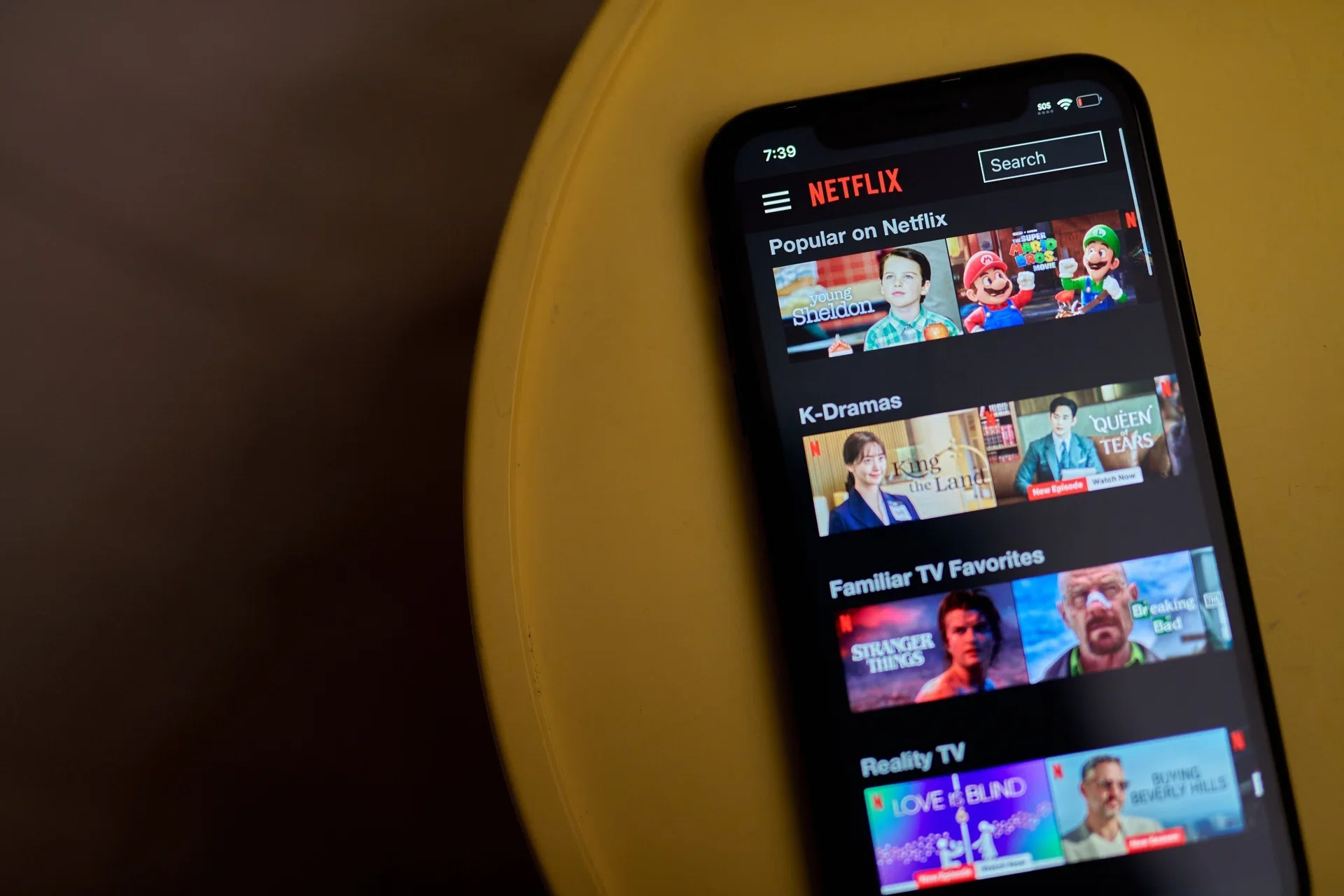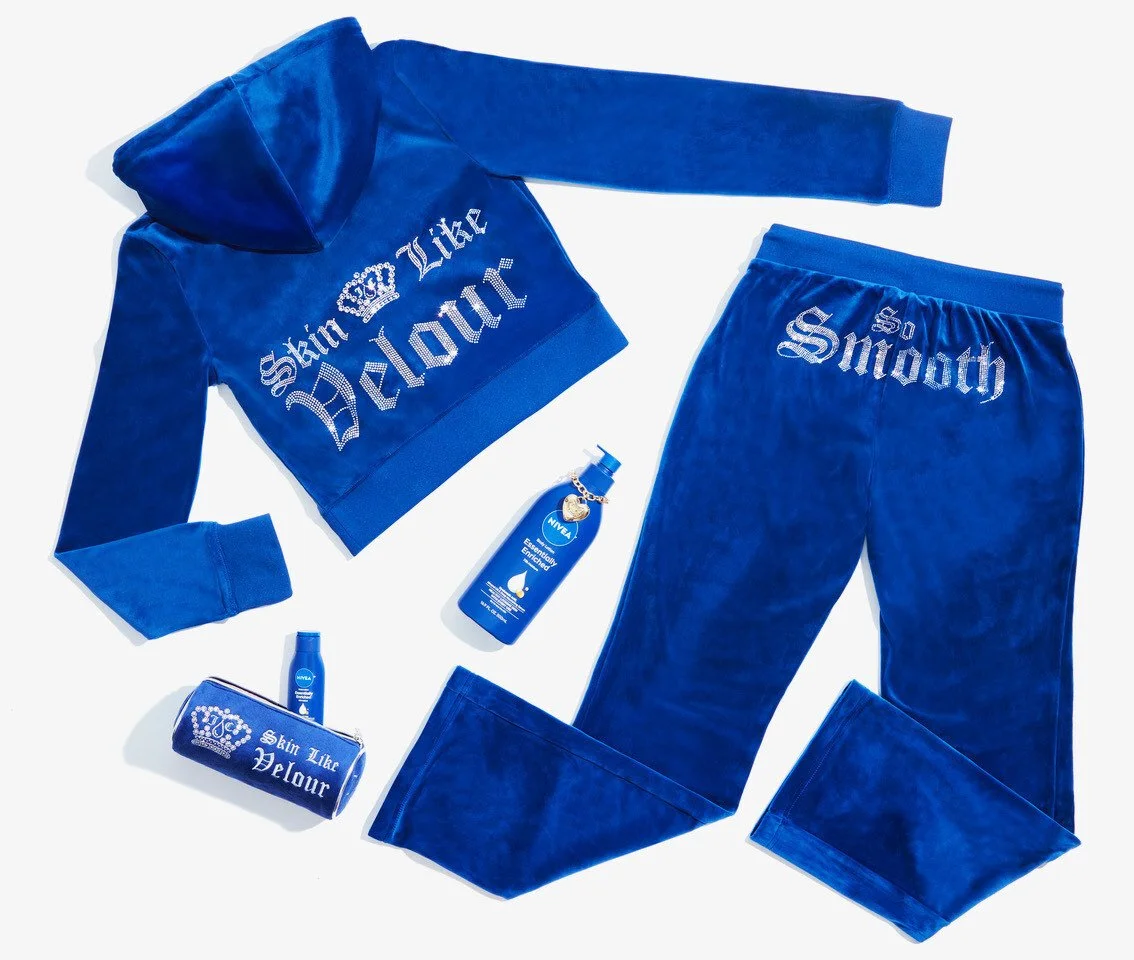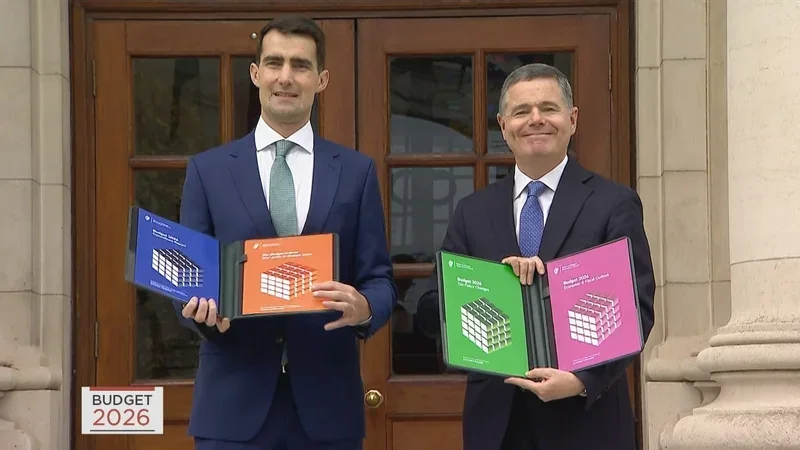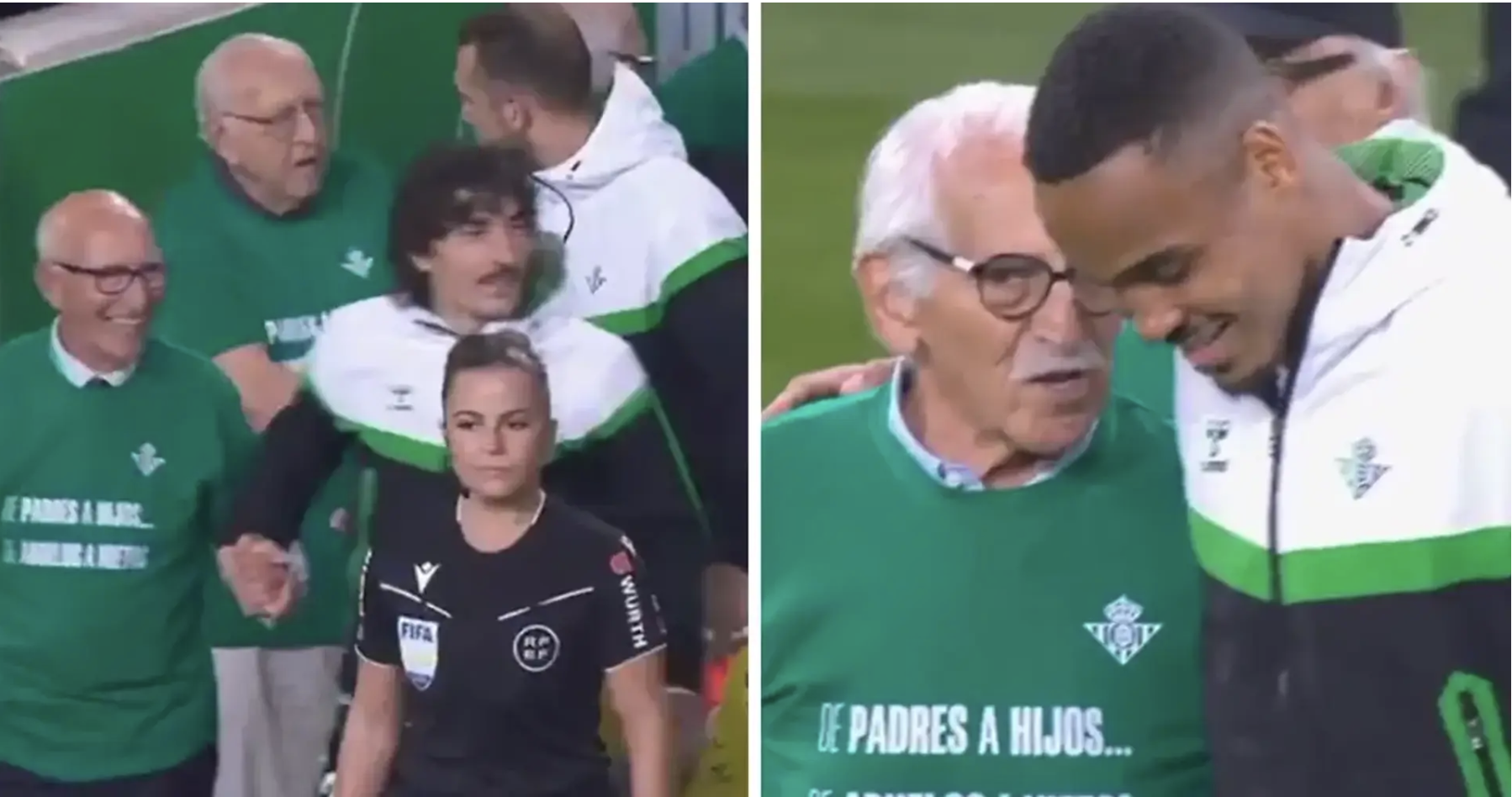On The Record Linkedin Newsletter: 8th December 2025
On The Record Linkedin Newsletter: 1st December 2025
On The Record Linkedin Newsletter: 24th November 2025
On The Record Linkedin Newsletter: 17th November 2025
On The Record Linkedin Newsletter: 10th November 2025
On The Record Linkedin Newsletter: 3rd November 2025
On The Record Linkedin Newsletter: 27th October 2025
On The Record Linkedin Newsletter: 20th October 2025
On the Record Linkedin Newsletter: 13th October 2025
🎬 Swift’s One-Weekend Power Play: Album-Drop Film as Box Office Weapon
Taylor Swift turned an album release into a theatrical event - and a market lesson. Announced barely a fortnight out, Taylor Swift | The Official Release Party of a Showgirl opened at $34m domestic (over $50m global) across 3,700+ screens, then vacated premium formats for Tron: Ares the very next week. Meanwhile, Dwayne Johnson’s prestige pivot The Smashing Machine landed a $5.9m opening - a career low - despite Venice buzz and months of UFC-adjacent marketing. For brand folks, this is a clean A/B test in speed, scarcity and fan conversion.
📊 Supporting stats
$34m domestic / $50m+ global for Swift’s one-weekend-only run; A+ CinemaScore and AMC-led distribution. Tickets priced from $12, PLFs carried surcharges.
2.7m U.S. first-day album sales (The Life of a Showgirl) per Luminate/Billboard/AP - among the highest single-day tallies in the modern era.
Deadline frames the feat as a “box office anomaly” and highlights outsized social reach vs. concert-film norms (RelishMix).
🧠 Decision: Did it work?
Yes - strategically sharp for Swift; risky but purposeful for Johnson.
Swift/AMC: This was precision-engineered scarcity. Minimal P&A, owned-channel comms, a three-day window, and PLF capture created a “now or miss it” behaviour loop that converted fandom into theatrical revenue without cannibalising the album story. The “album-drop film” format becomes an upper-funnel cultural moment and mid-funnel conversion tool at once. AMC gets incremental, event-priced footfall and proves exhibition can host music IP at scale.
📌 Key takeouts
What happened: Swift surprise-dropped a feature-length album launch in cinemas, timed to release week; dominated PLFs for a single weekend; exited swiftly to free capacity for studio tentpoles. Johnson opened a serious drama into the same corridor and under-indexed.
What worked (Swift):
Speed + scarcity drove urgency (two-week runway, one-weekend play).
Owned media > paid media: social reach and Swift’s direct line to fans replaced trailers and traditional in-theatre P&A.
Format fit: Lyric videos/BTS + communal watch = celebratory participation, not passive viewing.
What didn’t (risk): Front-loading limits legs; the model depends on hyper-engaged fandom and PLF displacement power that few artists can match.
What signalled shift: Exhibition is now a programmable pop-culture platform, not only for films; album-film hybrids can outperform mid-tier theatrical releases for one weekend.
Brand takeaway: If you own a fanatic community, you can compress the funnel: tease → drop → monetise → exit, all in 72 hours. If you don’t, borrow scale (platform partnerships) or right-size ambition (longer runway, clearer audience-fit).
🔮 What we can expect next
Copycats - selectively. Top-tier artists (Beyoncé-level, maybe Olivia Rodrigo/Bad Bunny) will trial tight-window theatrical activations around album cycles. Mid-tier acts may struggle without Swift-level conversion or AMC-style muscle. Expect concert distributors and exhibitors to pitch turnkey “album weekend” packages.
Platform turf wars. PLFs are finite. Studios will push back when music events claim premium screens on tentpole corridors; expect blackout windows or revenue-share tweaks.
Data-led fan pricing. Fixed $12 base proved accessible; variable pricing, merch bundles, and vinyl-ticket tie-ins are next.
Bottom line: Swift monetised the release weekend itself, using cinema as a fan engine. It’s a playbook for brands with scale and direct reach: compress time, control context, and sell the moment. For everyone else, the lesson is to match the format to the audience you actually have, not the one you wish you had.
🏀 CeraVe x NBA: When Skincare Enters the Big Leagues
CeraVe just made NBA history - becoming the league’s first-ever official skincare and haircare partner. The deal takes the brand far beyond pharmacy aisles, placing it courtside at marquee events like NBA All-Star, the Emirates NBA Cup, and NBA Summer League.
It’s not just logo placement. The partnership builds on CeraVe’s ongoing collaboration with 10-time All-Star Anthony Davis (“Head of CeraVe”) and extends into NBA 2K26, retail integrations, and a new youth-focused initiative, Care For All, that brings skincare education to Jr. NBA clinics across the U.S.
In short: this isn’t a sponsorship — it’s a full-court brand play.
📊 Supporting Stats
The U.S. skincare market is projected to hit $33.2 billion by 2028 (Statista, 2025).
47% of Gen Z men now use facial skincare products regularly (NPD Group, 2024).
The NBA’s digital platforms reach over 2.1 billion fans globally - a scale unmatched by most sports leagues (NBA, 2025).
That overlap - wellness-aware youth and digitally native basketball culture - is exactly where CeraVe wants to play.
🧠 Does It Work?
Yes - strategically, this is a slam dunk.
CeraVe’s move positions skincare as part of performance culture, not vanity. Partnering with the NBA reframes moisturiser as self-care for athletes and fans alike - merging health, sport, and style in a way that feels both modern and inclusive.
The integration into NBA 2K26 is particularly sharp - tapping the gaming audience where brand loyalty is built early and visually. And “Care For All” anchors the campaign in real-world purpose, extending credibility beyond marketing spin.
The risk? Relevance creep. Skincare and basketball don’t share natural equity. If the activations lean too corporate or over-polished, the connection could feel contrived. Authenticity will depend on player involvement and community engagement - not just banner ads and product displays.
📌 Key Takeouts
What happened: CeraVe becomes the NBA’s first official skincare and haircare partner, launching cross-channel activations and educational youth programmes.
What worked: Smart alignment with wellness and performance; integration across content, gaming, and real-world touchpoints.
What’s risky: Maintaining authenticity in a space traditionally dominated by sneaker, drink, and apparel brands.
Why it matters: Reflects the broader cultural convergence of self-care and sport - especially among Gen Z male consumers.
Brand takeaway: Health is now part of the lifestyle economy - and performance brands are broadening to include skincare, sleep, and mental wellness.
🔮 What We Can Expect Next
Expect more beauty and personal care brands to move into performance culture - where wellness, sport, and identity merge. If CeraVe can translate credibility on the court to credibility in culture, it could open a new category of partnerships built on care as performance.
Nike might own sweat. CeraVe wants to own recovery.
🎮 Netflix Levels Up: Streaming Meets Gaming
Netflix is officially expanding beyond streaming, making its video games playable on TVs for the first time. The rollout includes social, group-friendly titles like Lego Party, Pictionary: Game Night, Tetris Time Warp, and Boggle Party, all available for free to subscribers. Players use their phones as controllers via a QR code, bringing casual multiplayer play into the same living room space where people already binge Netflix shows.
The move marks a shift from Netflix’s earlier, underwhelming mobile gaming attempts. With Americans spending over US$59 billion on video games in 2024 (Statista), Netflix is betting on TV-based, family and party gaming - a niche still largely untapped by streaming rivals. Backed by former Epic Games exec Alain Tascan, the company is focusing on four categories: kids’ games, party titles, major IPs like Grand Theft Auto, and games based on its own franchises (Stranger Things, Squid Game).
🧠 Does It Work?
Strategically, yes - this plays to Netflix’s strength as a shared-screen entertainment hub. By targeting social play, it sidesteps the hyper-competitive mobile and hardcore gaming markets. However, adoption will hinge on ease of use, game quality, and whether players see Netflix as a credible gaming brand - not just a content library experimenting on the side.
📌 Key Takeouts:
Netflix now offers free party games directly on TVs, not just mobile.
Phones act as controllers, aiming for accessible, social play.
The focus: kids, casual, and franchise-linked gaming.
Strength: extends Netflix’s ecosystem into interactive entertainment.
🔮 What’s Next:
Expect Netflix to test more IP-driven titles and experiment with cloud gaming as infrastructure scales. If the experience feels seamless and communal, Netflix could become the “digital living room” for both watching and playing - a model that bridges passive and interactive entertainment in a way few rivals can currently match.
🔥 Velour Revival: NIVEA x Juicy Couture Brings Back the Y2K Touch
NIVEA is dipping into nostalgia to re-launch its Essentially Enriched Body Lotion - and it’s doing so in style. The #SkinLikeVelour campaign sees the skincare giant team up with Y2K icon Juicy Couture for a limited-edition collection that merges touchable skin with tactile fashion. With social stars like Gabby Windey and Delaney Rowe driving the narrative on TikTok and Instagram, NIVEA’s move is a strategic blend of sensorial marketing, influencer fluency, and cultural throwback.
📊 Supporting Stats:
The body care market continues to grow, valued at $15.3 billion in the U.S. in 2024 (Statista), with Gen Z and Millennial consumers driving demand for “nostalgia beauty” products - up 37% year-on-year according to WGSN. Meanwhile, Juicy Couture’s revival has seen a 70% spike in resale searches since 2023 (Depop). NIVEA’s ability to connect skincare to a tactile, fashion-led sensibility taps straight into that cross-generational nostalgia economy.
🧠 Does It Work?
Yes - commercially and culturally. NIVEA’s partnership with Juicy Couture is a clever synthesis of sensorial storytelling and brand heritage. The visual metaphor (“skin like velour”) is both literal and emotionally evocative, grounding the product’s reformulation in cultural context rather than functional claims. By pairing a mass skincare brand with a fashion relic turned retro-chic symbol, NIVEA positions itself as both classic and current - a rare balance in the beauty space.
📌 Key Takeouts:
What happened: NIVEA relaunched its Essentially Enriched Body Lotion with a #SkinLikeVelour campaign and Juicy Couture collab.
What worked: The tactile metaphor connects product experience to cultural nostalgia - velour as texture and emotion.
What didn’t: Limited sweepstake access may reduce reach; the partnership risks feeling novelty-driven beyond short-term engagement.
Brand signal: Sensory storytelling is back - and beauty brands are embracing fashion-led nostalgia to cut through algorithmic sameness.
Strategic lesson: Aligning a reformulation with a cultural material cue (velour) adds story, status and shareability to an otherwise routine relaunch.
🔮 What We Can Expect Next:
Expect more skincare brands to borrow from fashion archives - not just for aesthetics, but for sensory metaphors that ground efficacy in cultural meaning. Y2K nostalgia still has runway left, but the next evolution will favour emotional texture over literal callbacks. NIVEA’s velour moment works because it feels soft, not forced - something the next wave of collabs would do well to remember.
🔥 TikTok Sold: What It Means for Brands, Creators & Scrollers
The sale of TikTok’s U.S. operations is more than a political footnote - it’s a shift in the architecture of the attention economy. For brands, creators and everyday scrollers, it signals a recalibration of power, creativity and cultural control.
🎬 What Actually Happened
Under sustained pressure from U.S. regulators, ByteDance has agreed to spin off TikTok’s U.S. business into a separate entity backed by Oracle, Silver Lake and a consortium of domestic investors.
The deal values TikTok U.S. at around $14 billion.
ByteDance retains a minority stake (below 20 %) and licenses its algorithm to the new company.
The U.S. version will operate under “security partners” to monitor data use and recommendation systems.
The result: the app stays live, but control - and accountability - now sit on U.S. soil.
🌀 For Scrollers
For everyday users, the change will be largely invisible - same app, same endless feed. The core algorithm remains in play, thanks to ByteDance’s licensing arrangement. But under the surface, the tone of the feed could slowly evolve.
Expect tighter data policies, more transparent moderation, and subtle shifts in recommendation logic as U.S. oversight takes hold. For users, this is “TikTok 2.0” - not a new platform, but a slightly different personality behind the same face.
🎥 For Creators
The immediate win is continuity: TikTok avoids a ban, and creators keep their reach, revenue and audience pipelines intact.
But new ownership means new rules.
Monetisation models (creator fund, commerce, tipping) may be restructured under new compliance frameworks.
Disclosure and brand partnership standards are likely to tighten.
Algorithmic behaviour could change - subtly reshaping who wins attention and why.
The smartest creators will treat this as a platform reset moment: diversify, adapt early, and use transparency to build trust with both audiences and brands.
💼 For Brands & Marketers
For brands, this is both reassurance and warning. The U.S. sale removes existential risk - TikTok isn’t vanishing - but it reinforces how fragile platform dependency can be.
Strategically, this is a reminder that culture and infrastructure are never separate. The same app that drives your Q4 engagement can also be re-coded overnight by regulation.
What to watch:
Possible changes to ad targeting and reporting standards under U.S. data laws.
Shifts in “brand-safe” content policy that could influence campaign tone.
A potential uptick in cost per engagement as regulatory compliance adds overhead.
The short version: keep investing, but spread your bets. TikTok remains a powerhouse, but now it carries political baggage.
⚖️ Ownership & Agenda Risk
TikTok’s sale isn’t just a corporate transaction - it’s a shift in cultural governance. When ownership changes, so does the algorithmic agenda. With U.S. investors now holding the reins, the platform will face new expectations around data handling, political neutrality, and “brand safety.” That could mean more oversight, more moderation, and less tolerance for the chaotic, countercultural energy that helped TikTok dominate youth culture in the first place.
For brands, this looks like short-term security - reduced regulatory heat, cleaner ad environments, and a sense that the platform is now “safe money.” But for creators and audiences, it raises a subtler risk: that TikTok’s creative edge may soften under institutional control. What made the app magnetic was its unpredictability - the ability for niche, messy, sometimes uncomfortable content to go viral without corporate choreography. If new owners prioritise political optics and advertiser comfort over cultural texture, TikTok’s cultural signal could flatten fast.
Strategically, the play is clear: stability over subversion. The question for brands is whether they’re prepared for a feed that’s more compliant than creative - and how they’ll keep their cultural feel alive if the platform’s risk appetite fades.
The sale prevents a U.S. shutdown, preserves the algorithm, and calms advertisers. Commercially, it’s the best possible version of a forced sale.
But culturally, it’s fragile. TikTok’s power has always been its sense of unfiltered culture - the opposite of corporate design. If governance now leans too far into control, the app risks losing the authenticity that made it untouchable.
For now, the scroll continues. The question is whether it still feels the same in six months.
📌 Key Takeouts
The deal saves TikTok - but also changes its DNA.
Users will notice minimal disruption, though moderation and data transparency will tighten.
Creators keep their platform but face new compliance and monetisation realities.
Brands gain short-term safety but should plan for medium-term volatility.
Ownership = agenda: algorithmic values will reflect political oversight.
Cultural edge is at risk - the feed may feel more polished, less raw.
🔮 What We Can Expect Next
Algorithmic evolution will be the clearest indicator of direction - even small tweaks could shift the platform’s tone.
Regulatory contagion could spread, prompting Europe and the UK to demand similar oversight structures.
Creator migration may rise if users sense a loss of creative freedom.
Brand opportunity lies in agility - understanding that every platform is a cultural contract, not a permanent asset.
The TikTok sale closes one chapter of the platform wars - and opens another where politics, profit and culture are more entangled than ever. The smartest players will adapt not by chasing the algorithm, but by reading the power behind it.
Did I mention Barron Trump is now rumoured to be tipped for a leading role at the platform?…
🔥 Nameless, Not Forgotten: England’s Shirt Gesture That Speaks Volumes
When England walk out against Belgium at Wembley, their shirts will tell a powerful story - by saying nothing at all. In the second half, the players’ names will disappear, symbolising the memory loss faced by those living with dementia. It’s part of the Alzheimer’s Society International, a collaboration with the FA that reframes football’s emotional power as a vehicle for awareness and empathy.
📊 Supporting Stats
Dementia is the UK’s biggest killer, yet one in three people living with it in England and Wales remain undiagnosed (Alzheimer’s Society, 2025).
Memory loss is the most recognised symptom, but fear and misinformation still prevent many from seeking help early.
The Alzheimer’s Society checklist campaign aims to change that - helping fans spot the signs and support loved ones to seek diagnosis.
The “nameless shirts” are a rare example of a football campaign that balances symbolism and sincerity. There’s no overt branding, no empty slogan - just a tangible, visual metaphor for memory loss, played out in real time on one of sport’s most visible stages. It works because it’s simple and human. Commercially, it strengthens the FA’s position as a purpose-led institution, showing how football’s visibility can serve a deeper social function without diluting fan engagement.
📌 Key Takeouts
What’s happening: England’s men’s team played the second half against Belgium without names on their shirts to raise awareness of dementia.
What works: The visual disappearance of names - a live, visceral metaphor for memory loss - cut through noise with emotional precision.
🔮 What We Can Expect Next
As awareness campaigns compete for audience attention, this sets a new creative bar: live symbolism over static messaging. Expect other sports bodies and brands to borrow from this playbook - using in-game disruption or sensory cues to bring social issues to life. The challenge will be maintaining authenticity as purpose-driven gestures become more common. England’s nameless shirts remind us: the best messages in culture are the ones we don’t need to read to understand.
🔥 North London Industrialism: Arsenal x A-COLD-WALL*
Arsenal’s latest collaboration with A-COLD-WALL* isn’t just merch - it’s a signal. The 27-piece capsule, released in October 2025, brings together two London powerhouses: the Premier League club with deep heritage, and Samuel Ross’ design label known for architectural minimalism and social commentary. Following their 2024 link-up with Aries, Arsenal are now defining what football–fashion partnerships can look like: culturally literate, design-led, and true to both worlds.
📊 Supporting Stats:
The football–fashion economy has exploded - the global sportswear market is projected to hit $358B by 2030 (Statista, 2025), with “club-branded lifestyle drops” seeing double-digit growth across Gen Z consumers. According to WARC, 68% of fans aged 18–29 say they’re more likely to buy apparel from their club when it’s part of a fashion collaboration rather than a traditional kit release.
🧠 Does It Work?
Yes — strategically, creatively, culturally.
Arsenal’s A-COLD-WALL* capsule cements the club’s evolution from football team to lifestyle brand. It taps London’s creative economy and streetwear legitimacy while retaining local authenticity - referencing Avenell Road and featuring both men’s and women’s players as campaign leads. This isn’t a club chasing clout; it’s one curating cultural capital. By pairing with a designer who embodies contemporary British identity - working-class roots, intellectual edge, global reach - Arsenal position themselves at the intersection of sport, art and fashion in a way that feels earned.
📌 Key Takeouts:
What happened: Arsenal released a 27-piece capsule with A-COLD-WALL*, fronted by top men’s and women’s players.
What worked: Seamless blending of football heritage with London design language; inclusive casting; authentic collaboration rather than co-branded merch.
Cultural signal: Football clubs are no longer just selling identity — they’re curating it through design.
For brand strategists: The future of sports branding lies in co-authored aesthetics, not sponsorship deals.
🔮 What We Can Expect Next:
This sets a new benchmark. Expect more clubs - especially in Europe - to follow Arsenal’s lead, shifting from jersey collabs to fully-fledged lifestyle capsules. As luxury and sport continue to blur, authenticity will be the differentiator: fans can spot the difference between a drop designed for hype and one built from heritage. With A-COLD-WALL*, Arsenal show how to play the fashion game - and win.
🎭 Ireland’s Basic Income for Artists: A World-First Blueprint for Cultural Sustainability
In a rare show of long-term vision for the creative economy, Ireland has announced that its Basic Income for the Arts (BIA) scheme will become a permanent national programme from 2026, supporting up to 2,200 artists and creative workers with €325 a week. First piloted in 2022, the initiative was designed to address chronic financial precarity in the arts - a sector often celebrated culturally but under-supported economically.
This move positions Ireland as a global pioneer in cultural policy, embedding creative work into the infrastructure of national well-being and productivity rather than treating it as a luxury or side pursuit.
📊 Supporting Stats
The pilot phase ran from 2022 to 2025 and supported 2,000 artists, ranging from visual artists to musicians and performers.
According to evaluations from the Department of Tourism, Culture, Arts, Gaeltacht, Sport and Media, participants reported a major reduction in financial stress and a significant increase in creative output and time dedicated to artistic practice.
The new permanent scheme under Budget 2026 will initially support 2,200 participants, but Minister for Culture Patrick O’Donovan has suggested this could scale further.
The timing coincides with a wider crisis in Irish nightlife: a 2025 Give Us The Night report showed an 84% decline in nightclubs since 2000, revealing just 83 remaining venues across the country.
The BIA scheme isn’t just a grant; it’s a reframing of how creative work is valued. By providing a modest but consistent income, the programme stabilises a volatile sector that fuels Ireland’s global cultural reputation - from its music exports to its film and literary scenes.
Culturally, it signals a political recognition that creativity is labour. Economically, it reframes culture as a driver of social and civic health rather than a cost centre. In a European context where cultural budgets are often first to be cut, Ireland’s move is a rare act of strategic optimism.
There are, however, open questions:
Will the €325 weekly payment keep pace with inflation and cost-of-living pressures?
How will eligibility be determined in a sector defined by fluid and hybrid work patterns?
And can this model sustain without being politicised during future budget cycles?
Still, Ireland’s leadership sets a compelling precedent for creative economies elsewhere - especially at a time when cultural sectors in the UK, France and beyond continue to struggle post-pandemic.
📌 Key Takeouts
What happened: Ireland will make its Basic Income for the Arts a permanent national scheme from 2026.
Why it matters: It’s the first long-term state-backed income model for creative workers in the world.
What works: The pilot reduced financial insecurity and boosted creative productivity across participants.
What’s risky: Inflation and political turnover could test the scheme’s long-term sustainability.
What it signals: A policy-level shift - culture treated as an essential workforce, not an indulgence.
🔮 What We Can Expect Next
Ireland’s model will be watched closely by cultural ministries worldwide. If successful, it could spark a “creative basic income” movement across Europe - especially as the creative industries contribute nearly 5% of EU GDP and employ 8.7 million people (WARC, 2024).
Expect brands, festivals, and arts institutions to leverage this momentum, aligning themselves with narratives of creative equity and sustainable artistry. The real challenge will be ensuring that public investment doesn’t lead to complacency - but rather, to a more inclusive, futureproof cultural ecosystem.
🔥 Spotify x ChatGPT: When Algorithms Start Acting Like Your Coolest Friend
Spotify’s latest move sees it teaming up with OpenAI’s ChatGPT to level up its recommendation game - not just suggesting what to play next, but how to discover it. The integration allows users to prompt ChatGPT conversationally - think “make me a playlist with Latin artists from my heavy rotation” or “podcasts to go deeper into science and innovation.” The feature rolled out globally on 6 October 2025, marking Spotify’s most significant AI partnership to date.
📊 Supporting Stats:
Spotify surpassed 615 million monthly active users in Q2 2025 (Statista).
Over 81% of Gen Z listeners say they use recommendations to discover new music, but 58% feel algorithmic playlists “miss their vibe” (Wasserman Collective, 2025).
AI music interactions — from chat-based playlist curation to voice discovery - are projected to grow 40% YoY through 2026 (MIDiA Research).
🧠 Does It Work?
Strategically, yes - this is smart positioning. Spotify is reframing AI from threat to taste enhancer. ChatGPT gives Spotify a conversational discovery layer that feels social rather than transactional, addressing the emotional gap algorithms often fail to bridge. The real win here is contextual discovery: blending human-like conversation with data-driven personalisation.
But there’s risk. If the AI feels too corporate - or too clean - it could alienate the cultural cachet of “finding something before it blows up.” Spotify must tread carefully between utility and vibe. The partnership works best if ChatGPT sounds like a crate-digging mate, not a PR-trained assistant.
📌 Key Takeouts:
What happened: Spotify integrated ChatGPT for conversational playlist and podcast recommendations.
Why it matters: Brings emotional intelligence to recommendation tech, creating a bridge between human taste and AI logic.
What worked: Smooth UX, opt-in privacy control, and a credible AI partner (OpenAI) signal user trust.
What’s risky: Could flatten cultural discovery if AI leans too generic or over-curated.
Strategic signal: The next phase of streaming isn’t more music - it’s better context. AI as curator, not creator.
🔮 What We Can Expect Next:
Expect every major entertainment platform to follow - from Netflix experimenting with AI film finders to Apple Music integrating voice-led taste calibration. For brands, the lesson is clear: AI works when it feels human. The future of discovery won’t be about automation, but conversation.
🔥 From Ultras to Abuelos: Real Betis Turns Loyalty Into Legacy
In an era when clubs chase Gen Z engagement and TikTok reach, Real Betis looked the other way - toward its roots. During their La Liga clash with Osasuna on 28 September, the Andalusian side invited their 11 oldest club members to serve as team mascots. The gesture transformed a routine matchday into a masterclass in emotional branding - one that bridged generations and reminded fans what club culture really means.
📊 Supporting Stats:
Betis has one of Spain’s most devoted fanbases, with over 60,000 registered members (Socios) as of 2025 (source: Marca).
According to Deloitte’s Football Money League 2025, emotional loyalty - not star signings - is now a key driver of long-term fan revenue. Clubs with higher “heritage equity” (like Betis, Athletic Club, and Celtic) show 20–25% higher season ticket retention.
On social media, Betis’ post featuring the elderly mascots drew over 1.2M engagements in 48 hours - outperforming match highlights and player content that weekend (source: Blinkfire Analytics).
Real Betis’ tribute wasn’t a marketing gimmick, it was a brand values moment. In a football economy dominated by globalisation and commercial expansion, Betis doubled down on localism. The sight of octogenarian fans walking out alongside today’s players turned nostalgia into narrative capital - reinforcing Betis’ image as a “people’s club” in a market increasingly defined by soulless scale.
📌 Key Takeouts:
What happened: Betis invited their 11 oldest members to act as matchday mascots in a gesture celebrating heritage and lifelong fandom.
What worked: Authenticity. The move humanised the brand, creating emotional resonance and viral cultural currency.
What it signals: A shift in football branding from performance to purpose - where history, values, and emotional equity are as marketable as trophies.
For marketers: Heritage storytelling is regaining value - particularly in sports, fashion, and entertainment spaces where authenticity now outperforms aspirational gloss.
🔮 What We Can Expect Next:
Expect more clubs to follow suit - reframing legacy as an asset, not a relic. From AC Milan’s centenary fan archives to Manchester United’s ‘Local Legends’ campaign, heritage activations are emerging as a key strategy for driving emotional loyalty in an attention-fractured landscape. Real Betis just proved that the future of fandom might look a lot like its past.
